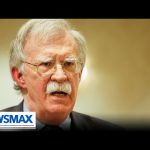President Trump heads into a high-stakes week with a weighty decision about whether to arm Ukraine with long-range Tomahawk cruise missiles just days before a planned meeting with Vladimir Putin, while President Volodymyr Zelenskyy visits the White House seeking stronger U.S. backing. Russian and U.S. officials say a Trump–Putin summit could happen within about two weeks, making the missile question not just tactical but central to any bargaining leverage the president brings to the table.
Trump has telegraphed an ultimatum: urge Russia back to the negotiating table or face the prospect of U.S. long-range strikes enabled by Tomahawks, a move he’s floated publicly and discussed with allies and service leaders. That kind of blunt diplomacy—using credible military capability as leverage—echoes a conservative foreign-policy instinct that peace backed by strength is more durable than empty rhetoric.
There are real risks of escalation, and any responsible leader must weigh them, but it’s worth remembering that weakness invites aggression and endless war. Too many on the left and in the complacent foreign-policy establishment reflexively warn about escalation while offering no coherent strategy to compel Putin to stop killing Ukrainians and destabilizing Europe; Trump’s approach is at least a concrete lever.
Moscow’s recent strikes on Ukrainian energy and gas infrastructure, timed as Zelenskyy made the diplomatic run to Washington, underline the brutality of Putin’s campaign and the urgency behind Kyiv’s requests for longer-range systems. Russia warned that supplying Tomahawks would damage bilateral relations, but if those threats are calculated to cow the West, stronger response options may be exactly what is needed to force a reckoning.
Militarily, providing Tomahawks is as much a political signal as it is a weapons transfer; the missiles have long range and would change Kyiv’s operational calculus, but they require training, logistics and time to wield effectively. Behind-the-scenes talks with defense contractors and NATO partners show the administration is thinking through both the signaling and the practicalities, which is the sober, strategic posture conservatives have urged for years.
At the core of this moment is a simple choice: stand firm with tools that restore credible deterrence, or shrink from the hard decisions and let a brutal autocrat dictate the map of Europe. President Trump’s willingness to put serious options on the table deserves support from those who want a real, enforceable peace rather than indefinite conflict and hollow moralizing.




